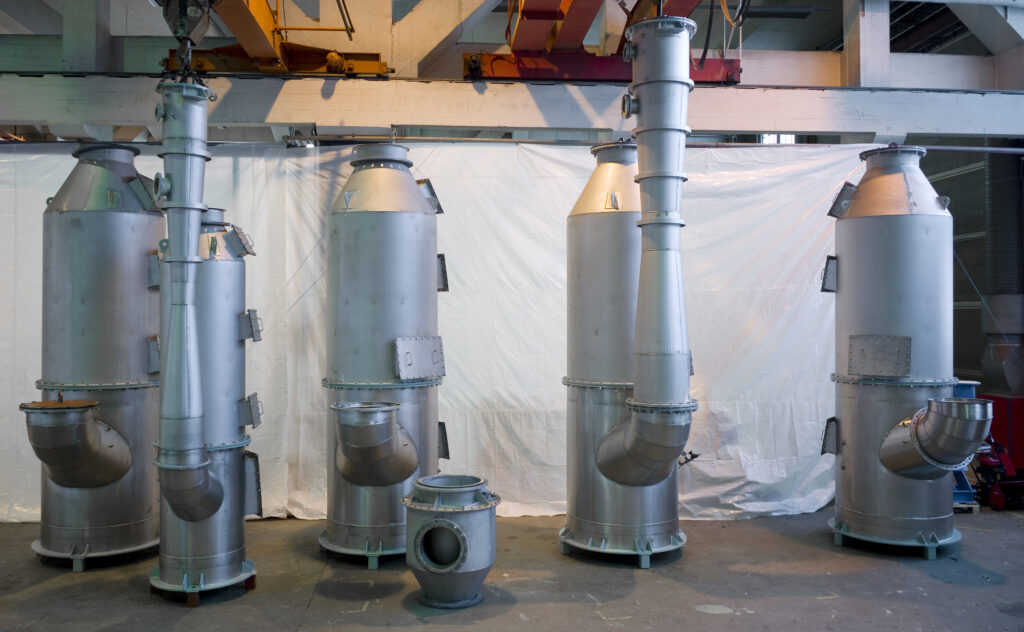Ships with scrubbers will emit at least 10 gigatonnes (Gt) of scrubber wash water each year absent additional regulations, the International Council on Clean Transportation (ICCT) said in a report.
A rapidly growing number of ships are being fitted with exhaust gas cleaning systems, or “scrubbers,” as a way to comply with the International Maritime Organization’s (IMO) 2020 global fuel sulfur limit. Scrubbers remove sulfur from ship exhaust by spraying a buffer solution, usually seawater, over it and then discharging the wash water overboard, often without treatment. The wash water is more acidic than the surrounding seawater and contains polycyclic aromatic hydrocarbons, particulate matter, nitrates, nitrites, and heavy metals including nickel, lead, copper, and mercury. Scrubber wash water is toxic to some marine organisms, harms others, and can worsen water quality.
This report is the first global assessment of the mass of wastewater discharges expected from ships using scrubbers. The authors used 2019 ship traffic, as a pre-COVID-19 baseline, and considered approximately 3,600 ships that had scrubbers installed by the end of 2020. Results show that absent additional regulations, ships with scrubbers will emit at least 10 gigatonnes (Gt) of scrubber wash water each year. For context, the entire shipping sector carries about 11 Gt of cargo each year. Real-world discharges might be higher, as the authors used conservative estimates for wash water flow rates and the scrubber-equipped fleet now stands at more than 4,300 ships.
Approximately 80% of scrubber discharges occur within 200 nautical miles of shore, and there are hot spots in heavily trafficked regions, including the Baltic Sea, the North Sea, Mediterranean Sea, the Strait of Malacca, and the Caribbean Sea. Scrubber discharges also occur in IMO designated Particularly Sensitive Sea Areas (PSSAs), including the Great Barrier Reef, where about 32 million tonnes (Mt) of scrubber wash water is expected. But that represents only 5% of the 665 Mt expected to be discharged in PSSAs around the world. The Baltic Sea PSSA, for example, is projected to receive 295 Mt of discharges.
Although several governments have taken preventative measures and banned the use of scrubbers in their ports, internal waters, and territorial seas, many have not. Policymakers concerned about the impacts of wastewater discharges can consider several actions: The IMO could immediately call on ships to voluntarily stop dumping scrubber wash water in PSSAs. The IMO could then prohibit the use of scrubbers as a means of compliance with fuel sulfur standards and require that ships use cleaner fuels at all times. Countries and ports could ban scrubber discharges in their waters, and flag states could agree to phase out the use of scrubbers on ships flying their flag.
Shipping traffic is not distributed evenly and understanding how much wash water is expected to be discharged and where could improve policymaking. The interactive map below is filled with details of the distribution of scrubber wash water discharges. It has six different layers, and after activating the layer(s) you want to explore, move your cursor to the location of interest and left click to get more information. Additionally, a spreadsheet summarizing the amount of scrubber wastewater discharges within each country’s Exclusive Economic Zone, territorial seas, internal waters, major ports, and from ships that fly each country’s flag, is attached below.
This Interactive Map shows the global distribution of the wash water discharges from ships that had scrubbers installed by the end of 2020. The analysis is based on 2019 satellite AIS data from the ExactEarth and ship technical characteristics from IHS Markit. The ships fitted with scrubbers have been identified using data from the Clarksons WFR. Photo of open loop scrubber system: Wartsila





